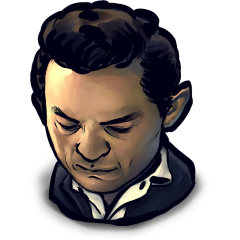Week 4 Complete Solution
Estimates of progress toward completion, revenues, and costs are reasonably dependable. |
$1,200,000 Inventory |
$1,200,000 |
the net deferred tax consequences of temporary differences that will result in net taxable amounts during the next year. |
$2,685,000 |
$109,000 |
operating and sales leaseback methods. |
100% financing at fixed rates. |
$121,621 |
Lease Receivable $150,979 |
(Lease A) Operating lease (Lease B) Capital lease |
- (TCO B) Define temporary differences, future taxable amounts, and future deductible amounts
- (TCO C) Measuring, recording, and reporting pension expense and liability.
Feeble Co. on January 1, 2011 initiated a noncontributory, defined-benefit pension plan that grants benefits to its 100 employees for services rendered in years prior to the adoption of the pension plan. The total expected service-years of the 100 employees who are expected to receive benefits under the plan is 1,200. An actuarial consulting firm has indicated that the present value of the projected benefit obligation on January 1, 2011 was $5,040,000. On December 31, 2011 the following information was provided concerning the pension plan's operations for its first year.
Employer's contribution at end of year $1,600,000
Service cost 600,000
Projected benefit obligation 6,043,200
Plan assets (at fair value) 1,600,000
Expected return on plan assets 9%
Settlement rate 8%
Instructions
(a) Compute the pension expense recognized in 2011. Assume the prior service cost is amortized over the average remaining service life of the employees.
(b) Prepare the journal entries to reflect accounting for the company's pension plan for the year ended December 31, 2011.
(c) Indicate the amounts that are reported on the income statement and the balance sheet for 2011. (Points : 35) - (TCO A) Chicago contractors got $5,400,000 contract to construct a school building for the City of Chicago. Work on this contract began in 2013 and the financial data pertaining to this contract is available here.
Cost incurred till Dec.31, 2013 $1,080,000
Billings made to City $1,000,000
Amount collected from City $ 750,000
The estimated future cost to complete this contract is $3,240,000.
(a) Prepare Chicago contractors 2013 journal entries using percentage of completion method.
(b) Show how the contract accounts will appear in the Balance Sheet of Chicago Contractors on 12/31/2013. - (TCO B) Hertz Co. prepared the following reconciliation of its pretax financial statement income to taxable income for the year ended December 31, 2013, its first year of operations:
Pretax financial income $300,000
Nontaxable interest received on municipal securities (15,000)
Estimated warranties not deductible for tax purpose in 2013 35,000
Depreciation in excess of financial statement amount (30 ,000)
Taxable income $290,000
Hertz’s tax rate for Year 2013 and for future years is 40%.
(a) In its Year 1 income statement, what amount should Hertz report as income tax expense-current portion?
(b) In its December 31, 2013 balance sheet, what amount should Hertz report as deferred income tax liability/asset?
Week 4 Complete Solution
Whenever there is a difference between book income and taxable income, it is due to the permanent difference or temporary difference. Temporary differences are those adjustments which will be reversed in future period. ...




Online Users
-
 Vikas
Today
Vikas
Today




A+ - Thank you!
Thanks for the positive feedback!